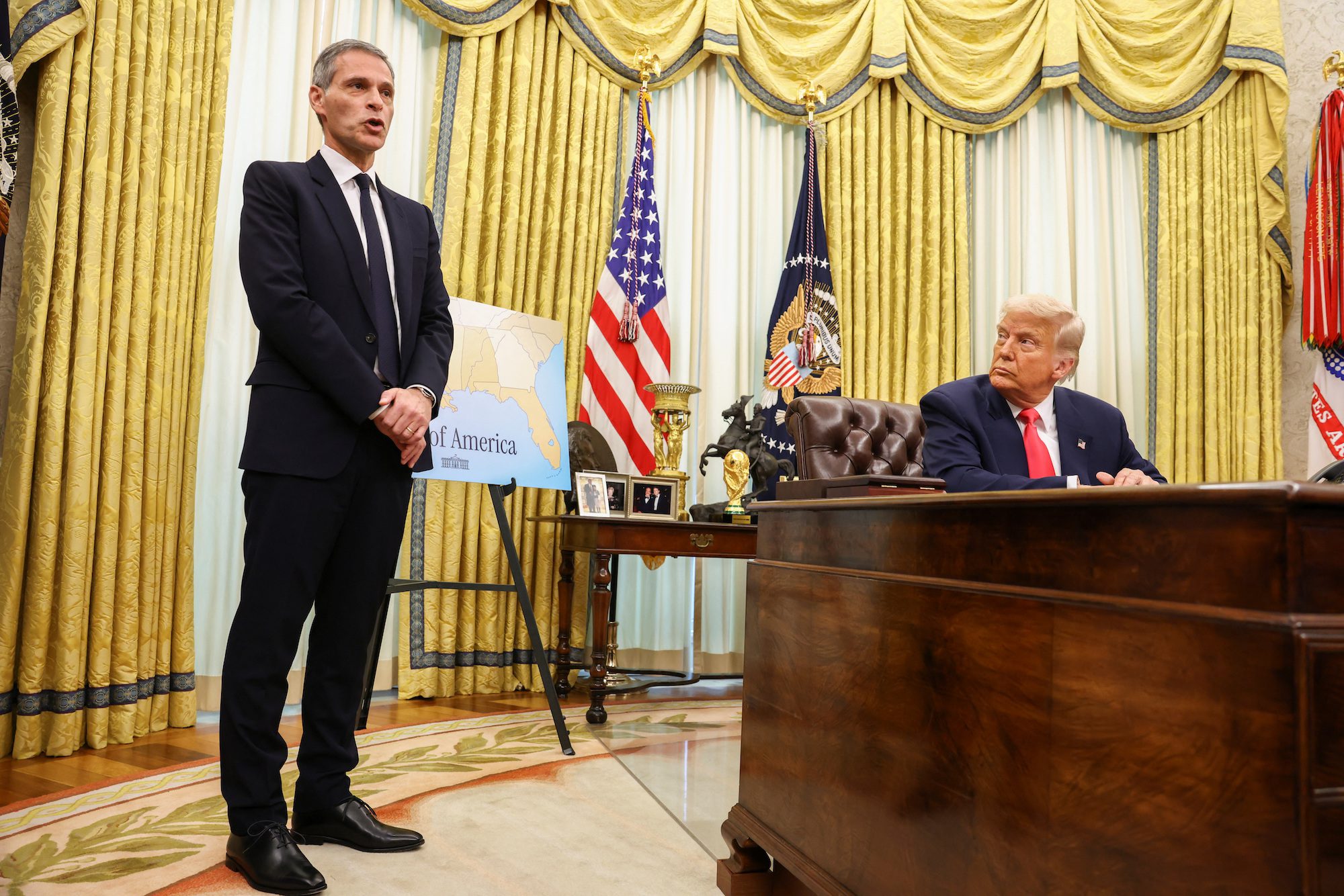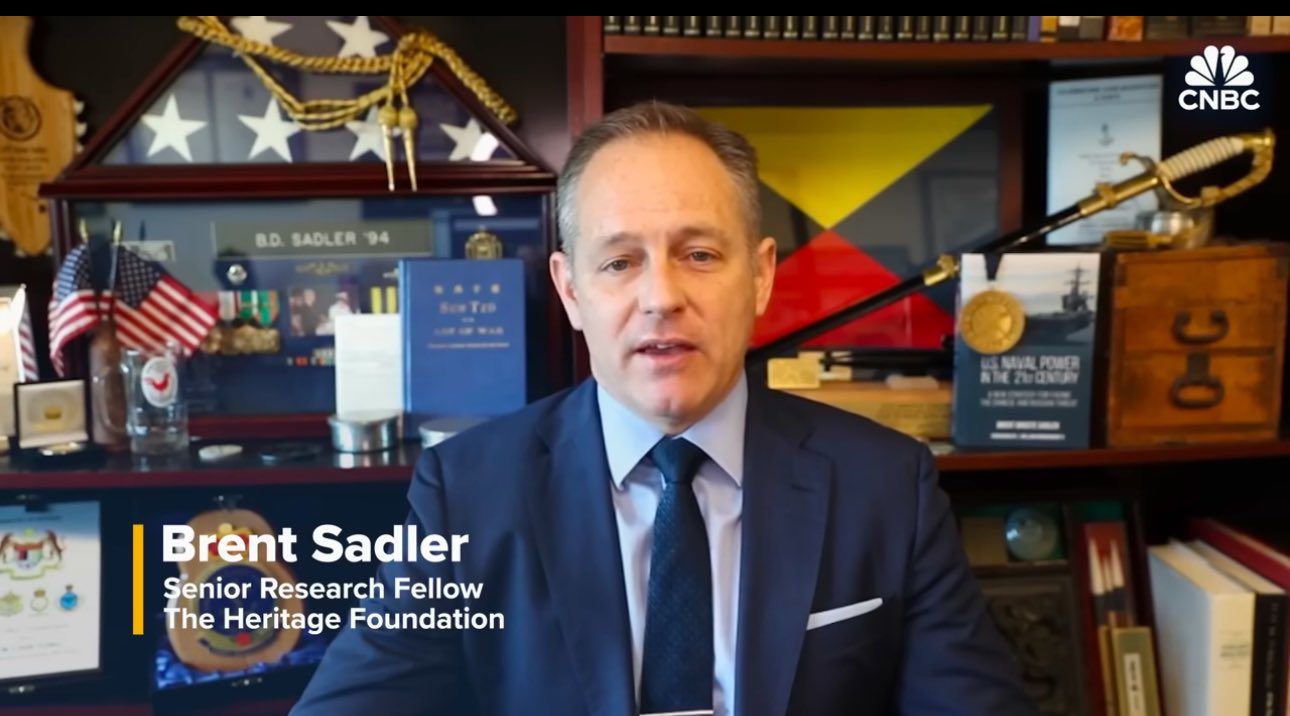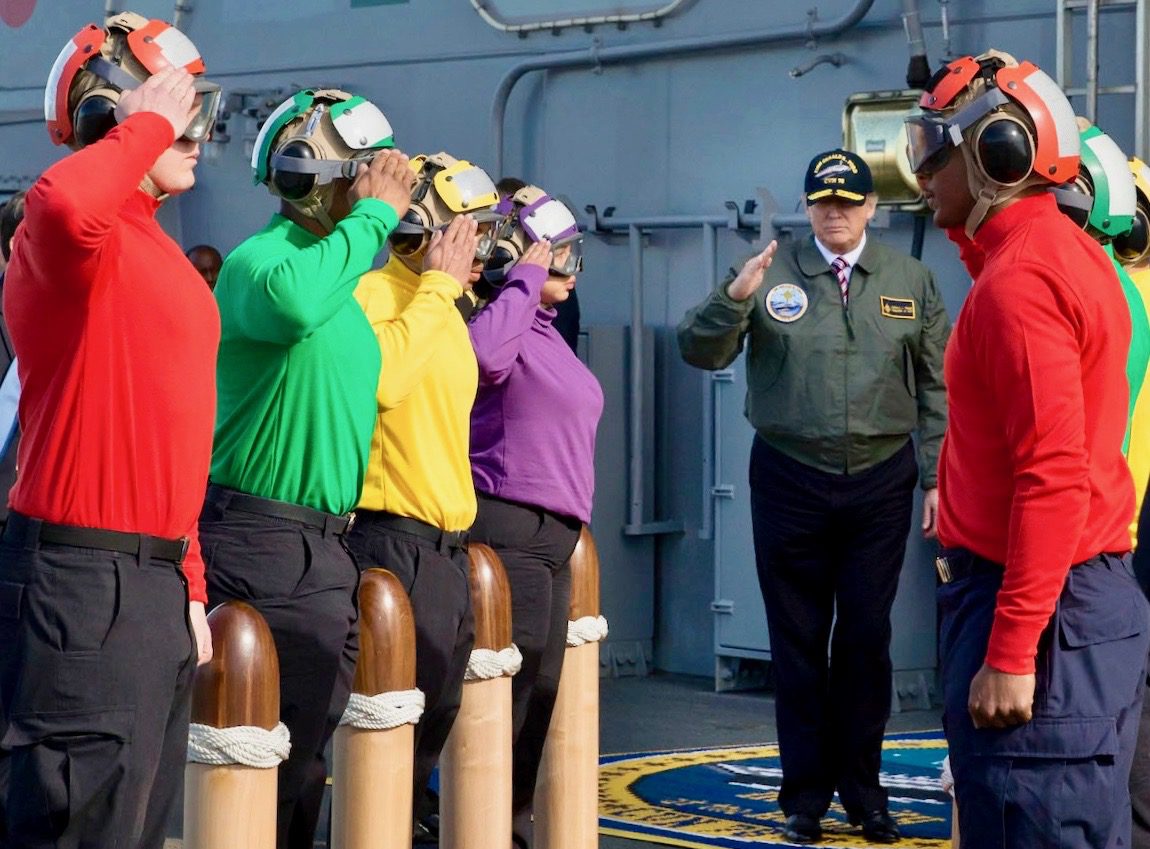By Bruce Kimbrell (Policy Op-Ed) The Chief of Naval Operations, Admiral Lisa Franchetti, finds herself at the proverbial ‘tip of the spear’ for America’s strategic sealift readiness—forced into an impossible decision between her vision for putting more players on the field and the practicality of managing a fleet impacted by a US Merchant Mariner recruiting and retention crisis.
Yet, this is not just a Navy problem.
America’s Strategic Sealift: A Crisis in the Making
The United States faces a critical challenge: a growing shortage of merchant mariners, the essential personnel who sustain both our economy and military logistics. The U.S. Merchant Marine, often called the “Fourth Arm of Defense,” includes these mariners who play an indispensable role in ensuring the flow of goods, fuel, and military supplies during peacetime, crises, and war. Today, this vital workforce is in peril. Without swift action, the nation’s ability to project power and maintain strategic mobility through our mariners at sea is at risk, making us susceptible to coercion from our adversaries.
The Long-Overlooked Fourth Arm of Defense
The World War II moniker of “Z-Men” for U.S. Merchant Mariners evokes images of those who delivered victory in the great wars. Their legacy reminds us that mariners on U.S.-flag ships provide vital support to both military operations and the peacetime economy, delivering supplies that enable forces to operate far from home while ensuring our store shelves remain stocked. Today’s mariners are the modern embodiment of those who came before, expected to fill the ranks of our strategic sealift fleet and be ready to man our vessels in times of crisis and war.
Yet, this critical role is jeopardized by a significant shortfall of qualified mariners that undermines both peacetime and crisis readiness. In 2018, former Maritime Administrator Mark Buzby warned Congress about this issue, reporting a national deficit of nearly 1,800 mariners. Unfortunately, this shortage not only persists but appears to be part of a worsening trend for the readiness status of the Merchant Marine.
In April 2024, Air Force General Van Ovost, Commander of U.S. Transportation Command, testified before Congress, expressing growing concern over mariner shortages exacerbated by an aging fleet of ships. Her comments highlighted not only the immediate readiness challenges but also the broader implications of fleet size and material readiness on the demand for mariner billets.
In August 2024, news of a potential layup of 17 Military Sealift Command (MSC) ships due to inadequate crew numbers confirmed that these warnings are not empty; the strategic sealift readiness force is indeed under serious threat. While the MSC situation highlights the mariner shortage, it also points to deeper issues within the nation’s maritime ecosystem.
Strategic Sealift: A National Security Imperative
Maintaining an adequate mariner workforce—ready to support strategic sealift readiness when called upon—is essential for both economic and national security. This workforce serves as the backbone of America’s supply chain during times of peace, crisis, and war. Having sufficient mariners and ships in the U.S.-flag fleet ensures the nation has someone to call upon when crisis strikes, and an adequate pool of trained mariners to meet strategic sealift manning requirements during peacetime.
Recent attacks on commercial vessels in the Red Sea underscore the stark reality that the world’s oceans are contested spaces. Our merchant mariners confront these threats head-on to ensure our ships can continue delivering America’s trade to the homeland. In these dangerous times, we rely on them not only to transport vital goods when others hesitate but also to deliver the fuel and supplies that keep our Navy at sea and America’s forces forward deployed. Given our dependence on the merchant marine for strategic mobility far from home, and to keep trade moving even under threat of attack, declines in the mariner workforce pose a significant vulnerability in our strategic mobility enterprise. Without a resilient mariner workforce, our ability to navigate these threats and ensure global trade commitments is at serious risk.
Unpacking the Shortage of Mariners
There are several factors contributing to the decline in the mariner workforce.
The aging demographic of current mariners, combined with a lack of national recruitment initiatives comparable to military efforts, contributes to a dwindling supply of new talent. Low awareness of maritime careers complicates efforts to attract young candidates. Additionally, the demanding nature of the job, with extended periods away from home, hinders retention and further discourages new entrants. High barriers to entry, such as the cost and complexity of credentialing, further complicate the issue.
Furthermore, while the “Z-Men” of World War II were once celebrated by leaders like General MacArthur and President Eisenhower for their pivotal roles in victory, today’s mariners are often overlooked, denied the public recognition afforded to their military counterparts.
Moreover, economic factors exacerbate the issue. U.S.-flag ships carry only 1.5% of America’s international seaborne trade and less than 0.4% of the world’s ocean-going shipping. This limited cargo demand and low participation in international trade contribute directly to the shortage of mariners, as there are fewer opportunities to attract and retain them.
Maritime Administrator Ann Phillips confirmed this dynamic in her 2023 testimony to Congress, “Requirements for sealift qualified mariners are a function of the size of the U.S.-flagged fleet, which also determines the number and type of opportunities available to mariners.”
With limited cargo demand from U.S. companies to ship their trade and low participation in international trade, the U.S. fleet remains dependent on government induced cargo, which is proving insufficient to create a flourishing U.S.-flag fleet in the international market or to support a robust mariner workforce from which to draw strategic sealift mariners.
Immediate Actions to Address the Mariner Shortage
To effectively mitigate the mariner shortage in a tight labor market, a multi-tiered approach involving broad stakeholder engagement is essential.
First, the nation should launch a recruitment campaign highlighting the critical role of mariners. For example, we can extol the virtues of those who served in the contested waters of the Red Sea and faced enemy fire. Recognizing their contributions through awards and public acknowledgment can elevate the profession’s prestige, attracting new recruits. However, raising awareness alone isn’t enough; we need incentives such as scholarships, streamlined credentialing processes, and mentorship programs that emphasize the importance of mariners to national security and economic stability. Additionally, creating a dedicated recruiting website, like buildsubmarines.com, would enhance our outreach efforts.
Second, we must do everything in our power to retain existing mariners. We can achieve this by addressing quality-of-life concerns, such as offering attractive benefits, supporting work-life balance, and enhancing onboard amenities, including reliable internet access for personal communications. These changes would make long deployments more manageable and improve job satisfaction, encouraging retention.
Third, we should modernize and expand the proud tradition of the U.S. Merchant Marine Academy and state maritime academies by investing in more billets, technological innovations, infrastructure, and simulators. This approach can fast-track the development of higher numbers of skilled mariners, ensuring that our workforce is capable of meeting the increasingly complex demands of global shipping.
Finally, our leaders and the American people must commit to sustained public funding for programs that support strategic sealift readiness through government-driven baseline cargo demand. Existing initiatives, such as government cargo preference, the Maritime Security Program, and the Tanker Security Program, are crucial levers for establishing a minimum threshold of demand; without them, the mariner shortfall would be even greater. We must also develop clear metrics for quantifying strategic sealift readiness needs. Only then can we send precise demand signals to the market while maintaining an acceptable level of risk.
Long-term Vision for Sustainable Growth
While short-term solutions are vital for immediate relief, they must be complemented by long-term efforts to address the root causes of the mariner shortage in America. Central to the mariner shortage is a significant lack of robust commercial demand coupled with the market’s over-reliance on government demand.
Therefore, nurturing commercial cargo demand that compliments government demand, should be the long-term focus of our nation. Cargo demand drives the economics of the maritime ecosystem, and underfavorable conditions—created by fair regulation, incentives, innovation—theAmerican marketplace can generate commercial demand for U.S.-flag carriers, ultimately leading to an increase in the mariner workforce.
The first step towards implementation of this approach is to develop policies that incentivize U.S. companies to prioritize U.S.-flagged vessels. Legislative initiatives should reduce financial burdens and regulatory challenges that hinder U.S. ships from competing with foreign counterparts and favor U.S. entities using U.S.-flag carriers. This effort should also explore how U.S. trade policy could expand partner nation demand for U.S.-flag shipping while shaping complementary structures for shared opportunities in international shipping.
Second, we should start a national dialogue about what it means to sail under the U.S. flag, as every ship symbolizes America’s presence and sovereignty on the global stage. Hoisting the Stars and Stripes should signify tangible privilege in conducting America’s seaborne trade and confer the highest priority for protection on the high seas.
Finally, we should leverage the Maritime Innovation Center, as outlined in the James M. Inhofe Defense Authorization Act for Fiscal Year 2023, to explore market innovations that strengthen the U.S.-flag fleet’s value proposition. This approach will enable us to seize opportunities to compete effectively and mitigate risks arising from trends in global shipping and logistics.
A Path to Maritime Resilience
A long-term effort to boost cargo demand for U.S.-flag ships, beginning with American businesses, would significantly strengthen the maritime industry. By providing healthy government funding for programs that ensure baseline strategic sealift readiness, we can signal stability even amidst market fluctuations. This strategy can foster stable demand, encouraging private investment and growth, ultimately attracting more mariners and ships.
By implementing these proposals, we can develop a larger and more self-sustaining sector that expands both the fleet and the mariner pool, addressing the root causes of the mariner shortage facing America. If successful, this initiative would enhance the competitiveness of the U.S.-flag fleet while also contributing to job creation for the entire maritime workforce and promoting economic growth.
Operationalizing this concept requires U.S. maritime industry leaders and government stakeholders to agree on a target carry rate for U.S. international seaborne trade via U.S.-flag vessels. This rate would serve as a goal, adjusted incrementally to reflect market conditions, acting as a benchmark for success. Setting an aspirational rate would also serves as a catalyst to drive policy solutions and industry actions.
The alternative is increased dependence on a trade system dominated by strategic competitors, particularly China. This dependency poses significant risks, creating vulnerabilities in our strategic sealift readiness that adversaries may exploit if it aligns with their national interests. Assuming they wouldn’t take advantage of such vulnerabilities is dangerously naive and could jeopardize our national interests.
National Leaders: Act Now to Strengthen America’s Maritime Ecosystem
With substantial political momentum to tackle the broader implications of the mariner shortage, and a clear recognition of its importance for our economic and national security, now is the ideal moment for our leaders to act.
Introducing a range of cost-effective yet impactful measures, similar to solutions outlined in previous sections, would not only solve the mariner shortage in the long run but contribute to revitalizing the maritime sector—especially if Congress, Industry, and the Administration collaborate effectively.
Encouragingly, from Secretary of the Navy Carlos Del Toro’s call for a bold new Maritime Statecraft to the leadership of Representative Michael Waltz and Senator Mark Kelly, the imperative to join forces and address our maritime dilemmas has never been clearer or more compelling.

 Join The Club
Join The Club










